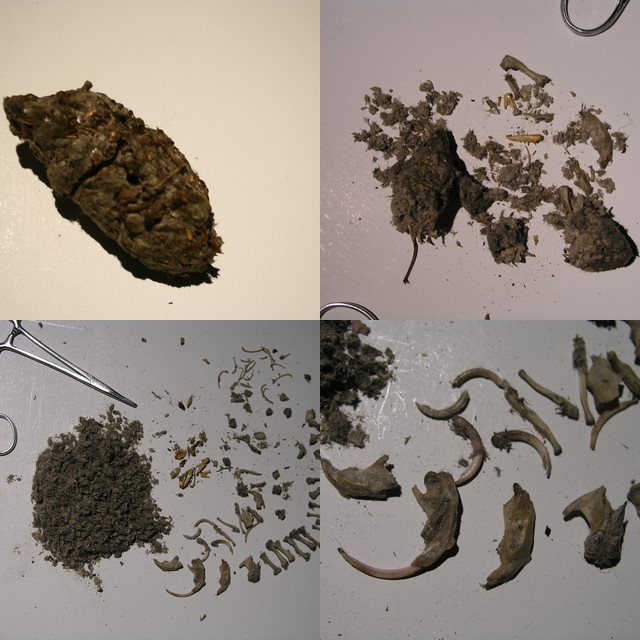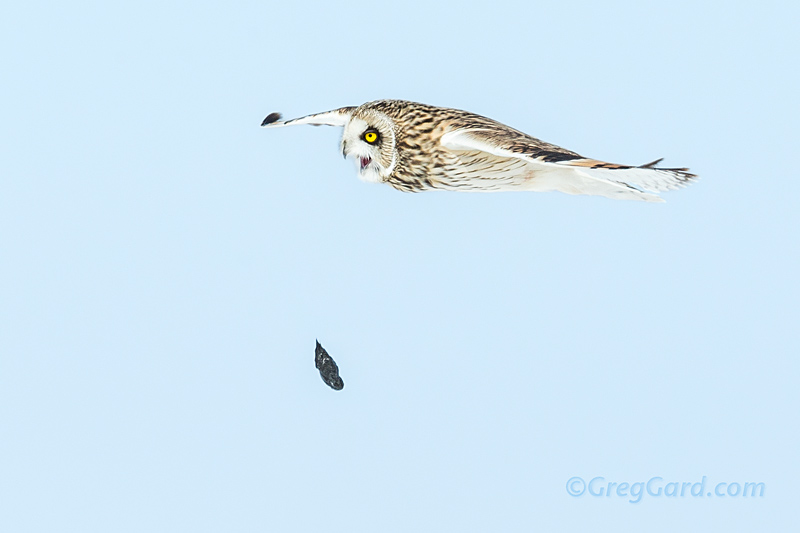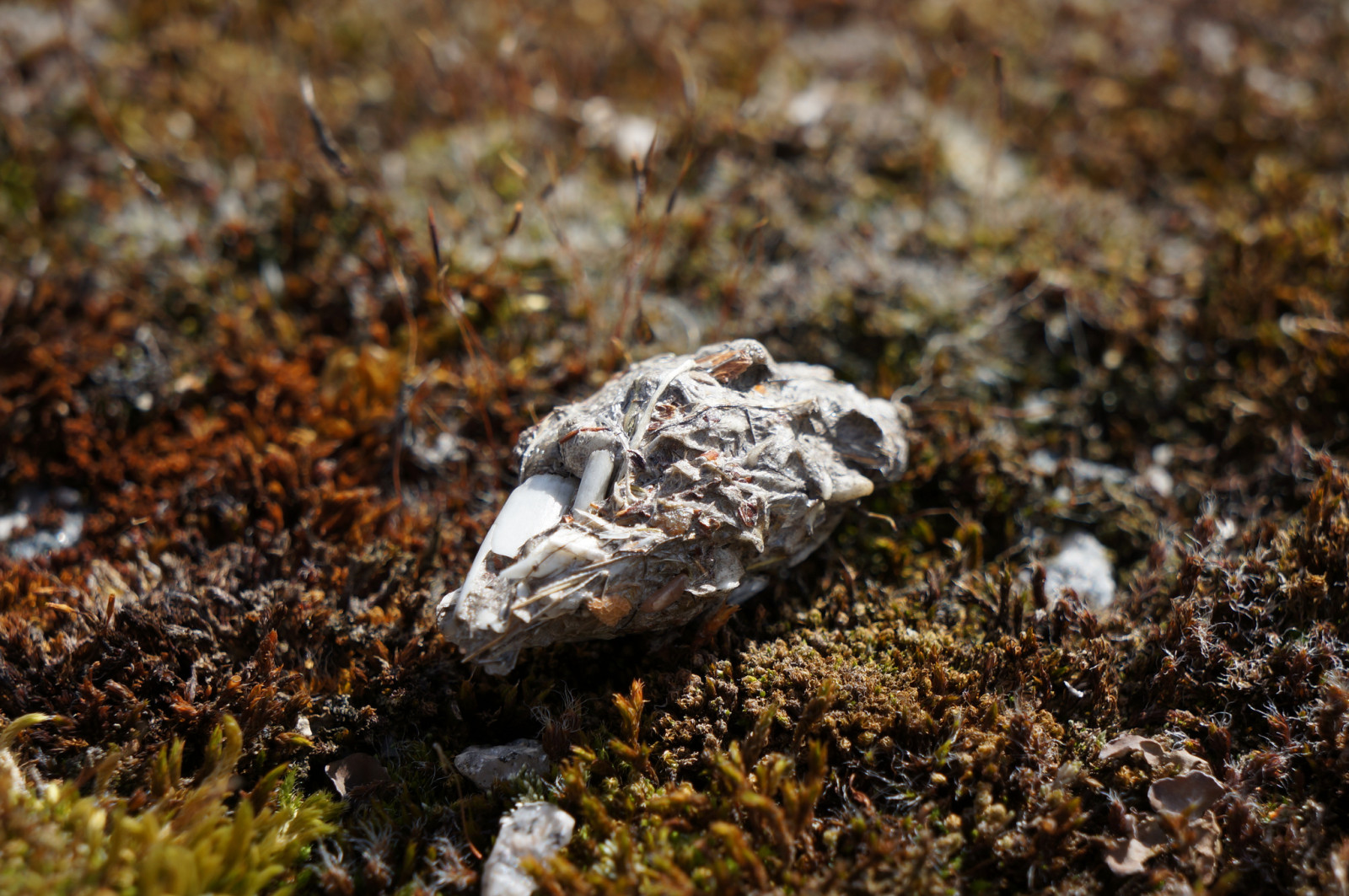When a bird of prey eats its prey and then regurgitates the bones and fur or feathers, what is that regurgitation called? — Colleen Hershon, Vallejo
There are at least two names for this regurgitation. Most common among naturalists and biologists is “pellet,” taken from the Old French “pelote” meaning ball (goes back to the 11th-century!). But pellet also may be related to “pilus,” as in hair. Falconers use “casting” to mean both the action of the bird throwing-up the pellet, and the end-product itself.
Pellets in raptors are often colored brown to gray or black depending upon their freshness and contents. The contents may be fur, feather, bones, insect parts, plant matter or whatever indigestible material has reached the bird’s gizzard. Between the muscular churning of the gizzard and the bird’s powerful stomach acids, a pellet can be amassed and regurgitated via the mouth anywhere from 6 to 12 hours after the meal.
The action of pellet casting is kind of bizarre to observe, and not for the faint of heart. The bird goes through a minute or so of chest and neck stretches resembling upper body yoga moves, then it finally elongates and arcs its throat downward, and drops the pellet from its beak. Some birds might shake their bills side to side to dispatch the pellet.

Pellets can be found anywhere that a raptor perches, often a roosting or nesting site. Many large palm trees in the Bay Area are home to barn owls, and so it is worth checking for the 1-inch by 3-inch pellets at a palm’s base. If you are concerned about exactly what you might be picking up, watch especially for bits of bone and tiny skulls to discern an owl pellet.
Most biology teachers know that pellet dissections can be exciting and tactile introductions to the scientific study of birds. One of the first pellets I found, as an undergraduate at UC Davis, was from under a Swainson’s hawk nest. The pellet was an intricate mass of pure interlocked beetle parts. The next week under the same nest, I found a feathery pellet about the same size as the first. Tweezing the feathers and bones apart I discovered a bird band. I reported the band and a few weeks later I got a letter that the band had been placed on a yellow-billed magpie a year earlier by a local ornithologist. Just two visits to one nest and I had two new pieces of data: Swainson’s Hawks eat insects during the breeding season, and Swainson’s eat magpies! Great news, that is, unless you happen to be the magpie.

As teens in the 1940s, John and Frank Craighead were passionate raptor biologists in southern Michigan, and they focused their every waking energy on finding raptor nests, collecting thousands of pellets, and locating wintering hawks and owls. Among the many things learned by the Craighead brothers (and published in their book, Hawks, Owls and Wildlife) was that owls tend to show 100 percent of their prey in their pellets, whereas hawks show on average, closer to 70 percent. Why should this be? Most hawk species use their feet and beak to tear apart their prey, then they swallow the pieces bit by bit. Owls swallow the prey animal whole, allowing their gizzard — that deft sculptor of pellets — to use its acids and muscles to create a pellet that is more fully representative of the food actually eaten by the raptor.
Although birds of prey are widely known for regurgitating pellets, a great range of birds has also been known to do so, from shorebirds, grebes, herons, and egrets to crows, ravens, and jays, and a variety of insect-eaters.
Some final notes: (1) some teachers advise “cooking” wet pellets in a microwave for 20 seconds or in a traditional oven for 40 minutes to kill off any microorganisms; (2) in lab studies, some mice have been known to steer clear of areas where pellets — or the scent of pellets — have been placed. Smart mice.






